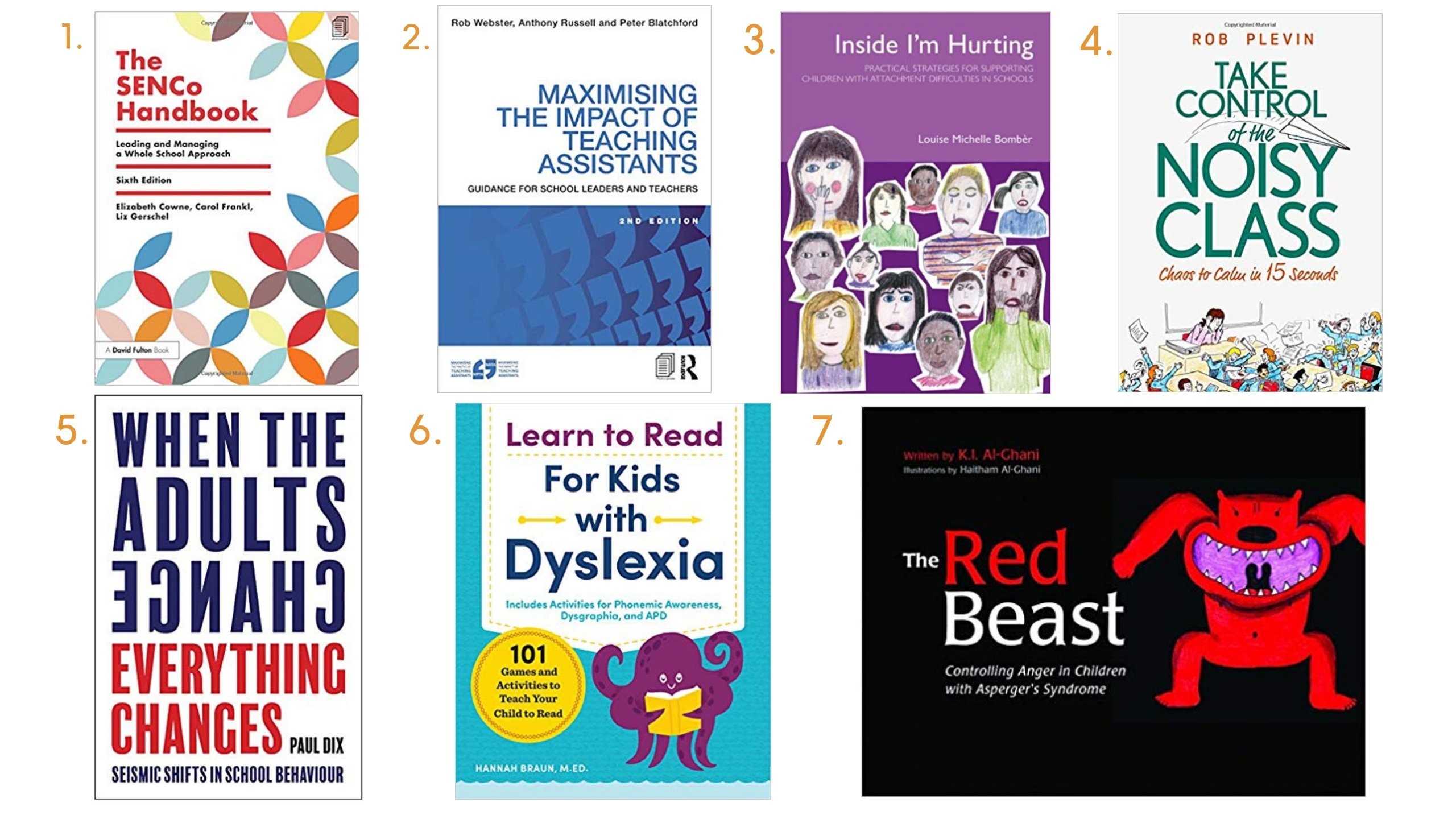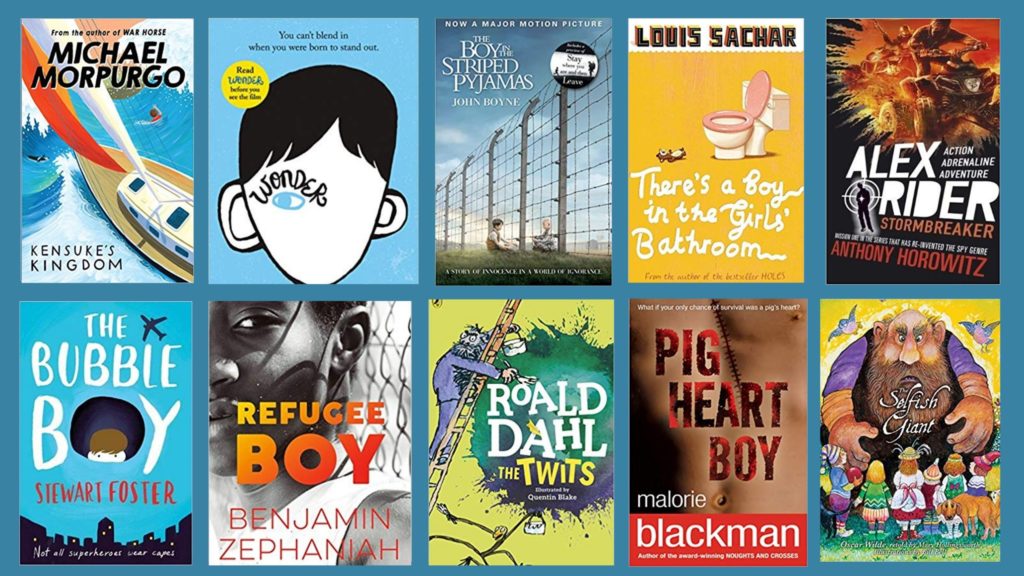Top books for special education (SEND)

This blog shares some of the top SEND resource books.
It gives a brief breakdown of the content of each one and why they may be useful in practice. I have personally used every book in some way for my own school practice and training and find each one incredibly helpful for different circumstances.

1. The SENCo Handbook
By Elizabeth Cowne, Carol Frankl and Liz Gerschel
It is always useful, as a new or experienced SENCo to have a handbook to ‘go to’ on the occasions that you are unsure of something. This seventh best-selling edition of ‘The SENCo Handbook’ is updated to reflect the new Code of Practice. It contains statutory guidelines and practical advice in order to help develop effective SEND practice in schools.
2. Maximising the Impact of Teaching Assistants
By Rob Webster, Anthony Russell (Contributor) and Peter Blatchford (Contributor)
Having used this book myself for staff INSET and training it offers much research and evidence-based guidance about how to effectively deploy teaching assistants and support staff.
The research carried out is detailed and the thing I like about this book is that it provides easily photocopied templates and resources to support decision-making and action planning. There is also a wealth of case studies to give practical and real examples of how to maximize the impact of support staff.
3. Inside I’m Hurting: Practical Strategies for Supporting Children with Attachment Difficulties
By Louise Bomber
This easy to navigate practical guide provides educational professionals with much-needed strategies, practical tools and the confidence for supporting children with attachment difficulties. The book places an emphasis on promoting inclusion in the school system by supporting the whole family.
Chapters within the book include: how attachment difficulties can affect a child’s ability to learn; providing an ‘additional attachment figure’ in schools; the benefits and challenges of getting alongside children who have experienced trauma and loss. The book also includes a photocopiable template for an initial meeting with the parents.
4. Take Control of the Noisy Class: Chaos to Calm in 15 Seconds
By Rob Plevin
This new book by teacher Rob Pelvin is an easy read and is written with humour and understanding. Pelvin has 20+ years’ experience in special education and mainstream settings; in his book, he provides a step-by-step plan for successfully managing the most challenging individuals and groups in today’s toughest classrooms.
Packed with powerful, fast-acting techniques – including a novel routine to get any class quiet in 15 seconds or less – this book helps teachers across all age groups connect and succeed with hard-to-reach, reluctant learners.
5. When the Adults Change, Everything Changes
By Paul Dix
This new book shows that it’s far more effective to change the behaviour of the adults in a school than it is to try to change the behaviour of the children. Dix draws on his own experience as a teacher, leader and trainer who has spent 25 years working in some of the most challenging schools, referral units and colleges.
Having firsthand experience of one of Paul Dix’s training sessions, this is powerful stuff and in this book, he manages to capture ‘real’ case studies alongside tried-and-tested strategies that have been used in a range of schools with a variety of backgrounds. The book demonstrates how these approaches place the focus back on adults and reiterate the importance of simple human interaction. Most importantly, it provides a clear message about the importance of children knowing who they can trust.
6. Learn to Read for Kids with Dyslexia: 101 Games and Activities to Teach Your Child to Read
By Hannah Braun M
Learn to Read for Kids with Dyslexia makes reading enjoyable and rewarding with fun-filled games and activities that teach children how to read fluently and confidently. Specifically designed for children aged 7-12, these engaging activities offer children daily opportunities to practice and hone their reading skills.
The book highlights areas such as, skill building in phonemic awareness and dysgraphia for each activity; it also allows parents and teachers to focus on strengthening specific areas that will help children become lifelong readers.
7. The Red Beast: Controlling Anger in Children with Asperger’s Syndrome
By K.I. Al-Ghani
“Deep inside everyone, a red beast lies sleeping. When it is asleep, the red beast is quite small, but when it wakes up, it begins to grow and grow. This is the story of a red beast that was awakened.”
This is an illustrated children’s storybook which was written for children aged 5+.
I have used it myself with many autistic children, as it is so accessible. I also find reading it and talking about anger in a fun way useful to help children with tips about how to ‘tame their red beast’. I also signpost parents to this book so that they can further understand how anger affects children with Asperger’s Syndrome.







Responses